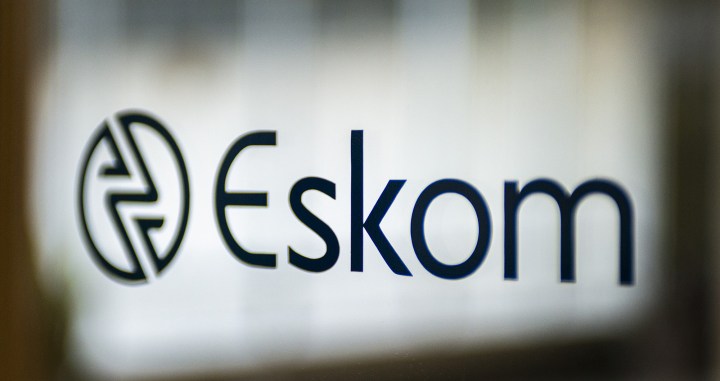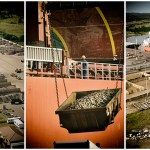OP-ED
Powering up: Raising the generation licensing threshold to 100MW is necessary – but not enough

Obstructive behaviour and bureaucratic red tape continue to inhibit the uptake of self-generation, embedded generation, distributed generation and trading of electricity in South Africa.
Chris Yelland is managing director, EE Business Intelligence.
There has recently been an overwhelmingly positive response to successful efforts by a number of industry, labour and employer associations, acting on behalf of electricity customers, to convince the powers that be to increase the threshold above which a generation licence is required, from 1MW to 100MW.
These industry, labour and employer associations include the Business Unity South Africa, Cosatu, Minerals Council of South Africa, Association for Surface Mining Industries, Energy Intensive User Group, National Employers Association of South Africa and many others.
However, while this reform is certainly necessary, and to be welcomed, it is not a sufficient condition to unlock the significant potential that self-generation, embedded generation, distributed generation, wheeling and trading can deliver to domestic, commercial, industrial, mining and agricultural customers of electricity, and to the South African economy.
To give some idea as to the extent of the obstructive behaviour and bureaucratic red tape, it should be remembered that even before the latest amendment of Schedule 2 of the Electricity Regulation Act (ERA), low-voltage (LV) embedded generation installations of less than 1MW capacity did not – and still do not – require generation licences.
Yet, despite this, as of 27 July, Eskom has advised that throughout South Africa there are only 27 authorised LV embedded generation installations connected to the Eskom grid, and some 27,000 technically illegal installations that do not have Eskom authorisation, and are therefore not registered with the energy regulator, Nersa.
“The estimated 27,000 unauthorised (illegal) connections is based on Eskom market research, where the majority is expected to be a ‘shared transformer’ scenario. There are 27 authorised LV embedded generation connections processed at present,” says Eskom. “Of these, none are on shared transformer infrastructure due to challenges highlighted previously.”
While national figures from municipal electricity distributors are not readily available, it is expected that a similar situation prevails in areas of municipal electricity supply. City Power has unofficially indicated that there are an estimated 5,000 unauthorised and technically illegal LV embedded generation installations connected to the City Power network alone.
Further inhibiting and restrictive practices have been detailed in an earlier article of 23 July, entitled “Outdated thinking and reactionary rules hold back electricity supply in South Africa”. These include: unnecessary limits on the size of LV embedded generation installations; not allowing LV embedded generation for customers with prepayment meters or credit meters without time-of-use functionality; and irrational and unfair limits on compensation to customers when supplying electricity back into the grid.
In the meantime, customers in both Eskom and municipal areas of supply continue to experience massive electricity supply disruptions.
Generation capacity shortages resulting from Eskom’s high levels of unplanned breakdowns and low availability of its generation plant leads to regular load shedding across South Africa, including by municipal electricity distributors.
In addition, a far greater number of power outages experienced by customers are caused by problems and issues within both Eskom and municipal electricity distribution networks. These power failures result from:
- Ageing and poorly maintained substations, mini-substations, transformers, lines, cables, switchgear and other distribution infrastructure;
- Overloading of distribution equipment and circuits due to population growth, illegal connections and electricity theft;
- Vandalism and theft of electricity infrastructure such as copper cables, overhead lines, transformers, steel structures and poles; and
- “Load reduction” imposed on delinquent municipal electricity distributors, as well as in Eskom direct areas of supply, to incentivise payment for electricity, and to prevent overloading due to electricity theft.
All of this is proving to be hugely disruptive to the economy, and to the lives and business operations of domestic, commercial, industrial, mining and agricultural customers, in both Eskom and municipal areas of electricity supply. The associated loss of revenue, productivity and jobs, and an inability to grow and adequately serve South Africa’s needs for economic recovery and growth following the Covid-19 pandemic are staggering.
So, in addition to simply lifting the threshold above which a generation licence is required, from 1MW to 100MW, other actions are necessary to facilitate the uptake of embedded generation across the full spectrum of applications – with capacities below 100kW; from 100kW to 1MW; and above 1MW. These actions should:
- Require Eskom and municipal electricity distributors to allow solar PV installations for customers having prepayment or credit meters without time-of-use functionality.
- Ensure that Nersa establishes a consistent and transparent national framework and methodology for the setting of fair and equitable feed-in tariffs to compensate customers when supplying electricity back into the grid.
- Stop arbitrary restrictions by Eskom and municipal electricity distributors forcing customers to be net consumers of electricity when installing embedded generators.
- Remove unnecessary and arbitrary limits by Eskom and municipal electricity distributors on the size of an embedded generator that a customer may install.
- Stop the irrational and restrictive practice by Eskom and certain municipalities of only allowing LV embedded generation installations where there is a dedicated supply transformer feeding the installation.
- Require that Eskom and municipal electricity distributors streamline, capacitate and facilitate the timely provision of cost estimate letters (CELs), quotations and authorisation processes for embedded generation installations, to address the backlog, and to ensure there are no delays in processing of new applications.
- Require that Nersa review its methodology, procedures and practices for the registration and licensing of embedded generation installations to remove all unnecessary restrictive and inhibiting practices and procedures.
- Require that Nersa streamline, automate or remove the need for the regulator to register embedded generation installations with capacities from 100kW to 1MW, as this is a completely unnecessary process that is duplicated by Eskom and municipal network providers.
- Ensure that Nersa establishes a consistent and transparent national framework and methodology for the setting of fair and equitable wheeling and use-of-system tariffs for transportation of energy from distributed generators to off-takers by Eskom and municipal electricity distributors.
- Require that municipalities have billing and metering systems in place to enable wheeling of power within the municipal electricity network, and across the Eskom/municipal boundaries, in one-to-one, one-to-many, many-to-one and many-to-many wheeling configurations, between related and unrelated parties.
- Ensure that Nersa establishes a consistent and transparent national framework, procedures, licensing rules and practices to enable resale of electricity by traders and aggregators.
- Address long-standing reactionary ideologies and attitudes within the Department of Mineral Resources and Energy, Nersa, Eskom and municipalities that serve the interests of the incumbent monopolies, rather than the needs of customers and the national interest.
It is accepted that addressing the above issues cannot be done all at once, but rather step by step, and that this may take a little time. However, it is essential to understand what needs to be done, and to focus initially on the “low-hanging fruit”, in order to unlock the significant potential that self-generation, embedded generation, distributed generation, wheeling and trading of electricity can deliver. DM


















Is anybody listening, Chris? More especially, Gwede and Cyril.
The last action point is the most important. The links between energy supply, GDP and jobs are common cause, yet nothing is done. We sorely need a technocrat with no ideological baggage in such an important position, who will address the remaining issues. Perhaps uncle Cyril can co-opt someone from the real world?
In addition to all the above problems it could well be said that splitting Eskom into 3 parts will have the same effect as splitting South Africa into 9 provinces. A huge duplication of bureaucracy, intermingled red tape and general confusion and zero progress.
I don’t see what our so called government has to do with the amount of electricity generated by private enterprise. Electricity is just a commodity like toilet paper.
No, it’s a commodity that can be milked on a continuous basis and therefore they need to control it.
Excellent article and action list! Now how do we get the actions to happen? I wish I knew. Replace Mr Mantashe (with whom?), separate electricity from minerals and energy, boycott the requirement to register rooftop PV and thus avoid the punitive FIT and fixed charge?
Thanks Chris, perhaps a slightly more radical suggestion.
Dont control this at all. If one follows electrical Certificate of Compliance its unlikely that one can overload a system. If the house has 20 amp breakers then 20 amps of solar is possible. If the transformer for the factory is 500 MVA then ~500kW of PV is possible.
Dont regulate at all.
Then if I want to feed back and apply netmetering etc sure add a few rules.
RSA just loves red tape. Let’s tear it all up and be counter intuitive. Let me see your face next to your ID. Check Fica complete. And even I may be adding red tape with that one comment. We are completely indoctrinated